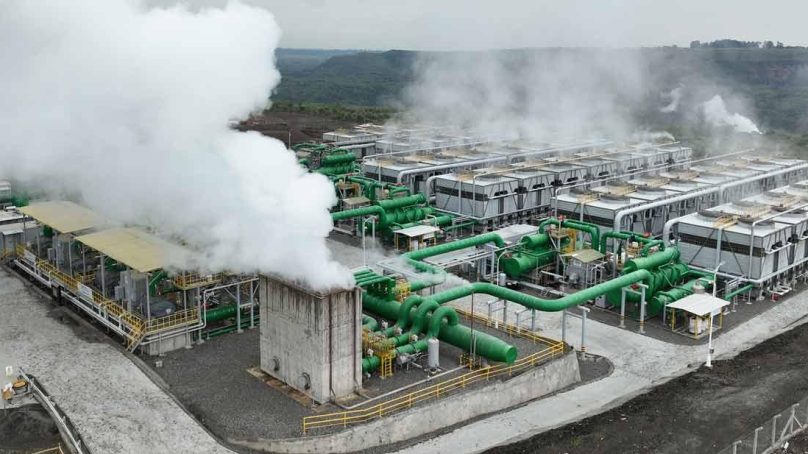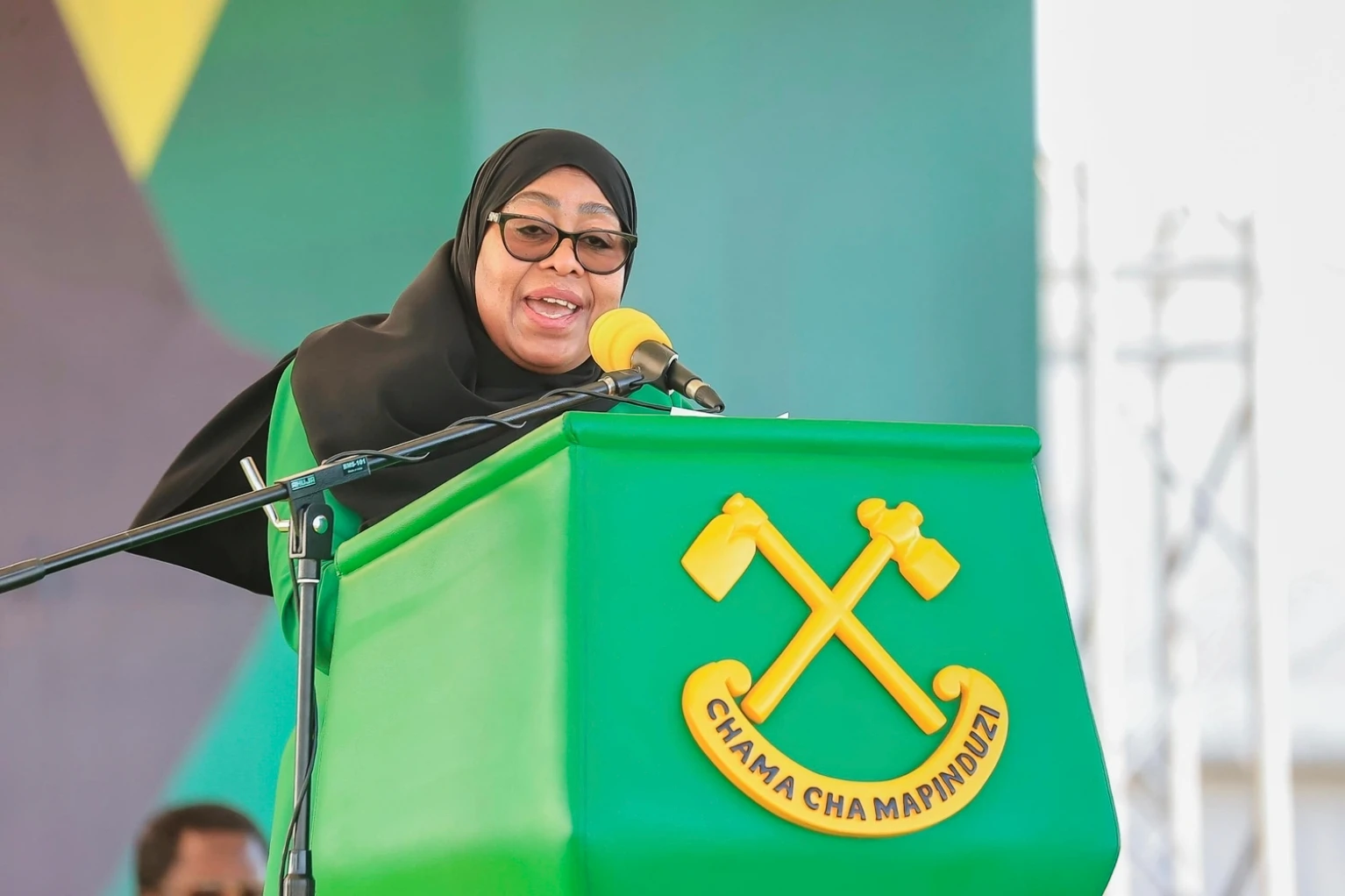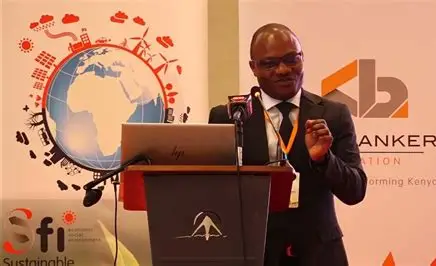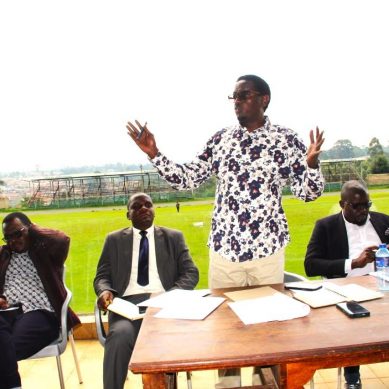
Private sector investment in Menengai geothermal project has hit the Sh36 billion following the development of three Independent Power Producers (IPPs) that are expected to jointly generate 105 megawatts.
Geothermal Development Company (GDC) Managing Director and Chief Executive Officer Paul Ngugi said the government was actively encouraging the private investments as part of its broader strategy to achieve universal energy access and transition to a green economy.
The MD said investments by the private sector were crucial for driving Kenya’s industrial growth through supply of affordable and reliable power supply, realization of the green energy agenda and attracting further capital for sustainable development.
Ngugi is happy that the Menengai 105 megawatts geothermal project has demonstrated how efficiently structured public-private partnerships (PPPs) can deliver transformative infrastructure while maintaining fiscal prudence.
“Had this investment by Independent Power Producers (IPPs) come solely from the Exchequer, it would have required diverting funds from other vital sectors such as health, education or security. This proves that the IPP model liberates government resources for other priorities,” he elaborated.
Interviewed in Nakuru, the geothermal project MD pointed out that attracting private capital into high-impact green energy projects is both pragmatic and essential adding that power from the Menengai geothermal project remained among the most affordable in Kenya, at approximately Ksh8 (7 US cents) per kilowatt.
The Menengai fields were developed by GDC, which is mandated with undertaking the capital-intensive work of exploration for geothermal steam and then developing viable fields by drilling production wells and building steam gathering systems.
Ngugi explained that GDC Company initiated the project in 2009 anda began drilling at Menengai site in February 2011 and had so far sunk over 43 wells, 24 of which have been tested cumulatively yielding 165 MW while the rest of the wells are said to be undergoing tests.
He explained that after de-risking the fields, GDC competitively selected three Independent Power Producers (IPPs) namely Sosian Energy, Quantum Power East Africa and the American firm OrPower Twenty-Two Company in 2013 through competitive bidding to build, operate and own the first three power plants in Menengai, each generating 35 Mega Watts to pump into the national grid a cumulative 105 Mega Watts.
The MD explained that the Menengai Model was simple yet strategic where the government, through GDC undertakes high-risk and early-stage work of exploration, drilling and infrastructure development before the Independent Power Producers step in to build and operate power plants, purchasing steam from GDC to generate electricity.
“Under this Menengai Model, GDC takes care of upfront risks and then invites private sector players to construct, own and operate the plants for 25 years,” Ngugi elaborated.
The CEO explained that geothermal energy was a capital-intensive enterprise, which he said partly explained why since 1972, progress in the sector had remained sluggish.
He, however, said that it was only after the establishment of the Geothermal Development Company (GDC) that the industry began to regain momentum.
Ngugi is optimistic that the entry of the three Independent Power Producers in electricity generation is expected to yield a significant drop in power tariffs and in turn attract more investors locally and regionally as they would have a huge saving on energy, creating employment opportunities, with prices of various value-added commodities expected to drop drastically.
By assuming the upfront risk, the CEO said GDC ensured that tariffs remained viable for investors while staying affordable for Kenyans. He further explained that to strengthen the PPP model, GDC was working with development finance institutions to mitigate credit-worthiness risks.
With support from the African Development Bank (AfDB), Ngugi said a Partial Risk Guarantee (PRG) instrument was created that was backed by the government to cover two key risks including non-payment by the power off-taker (Kenya Power) and non-delivery of steam by GDC.
The Partial Risk Guarantee, he added, was a critical pre-condition for the Menengai Project Implementation Steam Sales Agreement (PISSA) and its provision which he said was facilitated by the Ministry of Energy and Petroleum.
The managing director however disclosed that the government had considered transitioning from a Partial Risk Guarantees (PRGs) to instruments provided by the African Trade Insurance Agency (ATIDI).
He observed that unlike PRGs, ATIDI’s insurance does not require an escrow account or letter of credit, adding that Kenya’s status as a shareholder country adds an extra layer of confidence for private investors.
Ngugi pledged that GDC would replicate and refine the Menengai model at Paka and Suswa geothermal fields, this time through even more innovative approaches, bringing on board strategic partners at earlier stages.
The MD said that at Baringo-Silali-Paka project, GDC had harnessed 75 megawatts of geothermal steam and was targeting to have a 105 megawatts power plant at Paka by 2027. Similarly, GDC had started opening up the Suswa field, he added.
During his last visit to the Menengai Geothermal Project site in November last year, President William Ruto urged private investors to take full advantage of Kenya’s geothermal opportunities saying that the country had only utilized less than 10 per cent of its capacity in production of geothermal power. Kenya has a capacity of 10,000 megawatts.
“I want to encourage other investors that there is still immense opportunity in the geothermal resources of Kenya. We have just touched less than 10 per cent. We have a whole 90 per cent to go and the government of Kenya is ready and willing and prepared to work with the Private Sector to unlock this potential,” the Head of State said.
The first geothermal power plant at the Menengai Geothermal Project built by Sosian Energy, a local firm started electricity production in 2023 after completion through Ksh6.5 billion funding from the China-based Zhejiang Kaishan Compressor. The two parties also signed a 14-year Sh1.8 billion operations and maintenance of systems agreement.
The MD said construction of Quantum Power East Africa’s power generation facility was at 60 percent complete, while works at Orpower 22 Power Company were at 50 percent complete.
He added that GDC had constructed the steam gathering system while Kenya Electricity Transmission Company (Ketraco) had set up a 132 kilovolt (kV) substation that would transmit electricity from the three power plants.
In addition to increasing the renewable energy generation capacity in the country, the Menengai geothermal project is expected to reduce greenhouse gas emissions by 1.95 million tonnes of carbon dioxide annually, added Ngugi.
According to GDC, the Menengai Geothermal Project has the capacity to produce enough electricity to serve almost 500,000 homesteads and 300,000 businesses once the three IPPs are fully operational.
Last year, the New York based Orpower 22 broke ground at the Menengai Geothermal project for the construction of a 35MW plant, an event that was attended by President Ruto. The firm expects to spend Sh11.7 billion ($90 million) putting up the power plant in 14 months.
- A Tell Media / KNA report / By Esther Mwangi and Dennis Rasto
A geothermal power plant at the Menengai project site, a source of clean, affordable and sustainable energy. Photo by Dennis Rasto.








